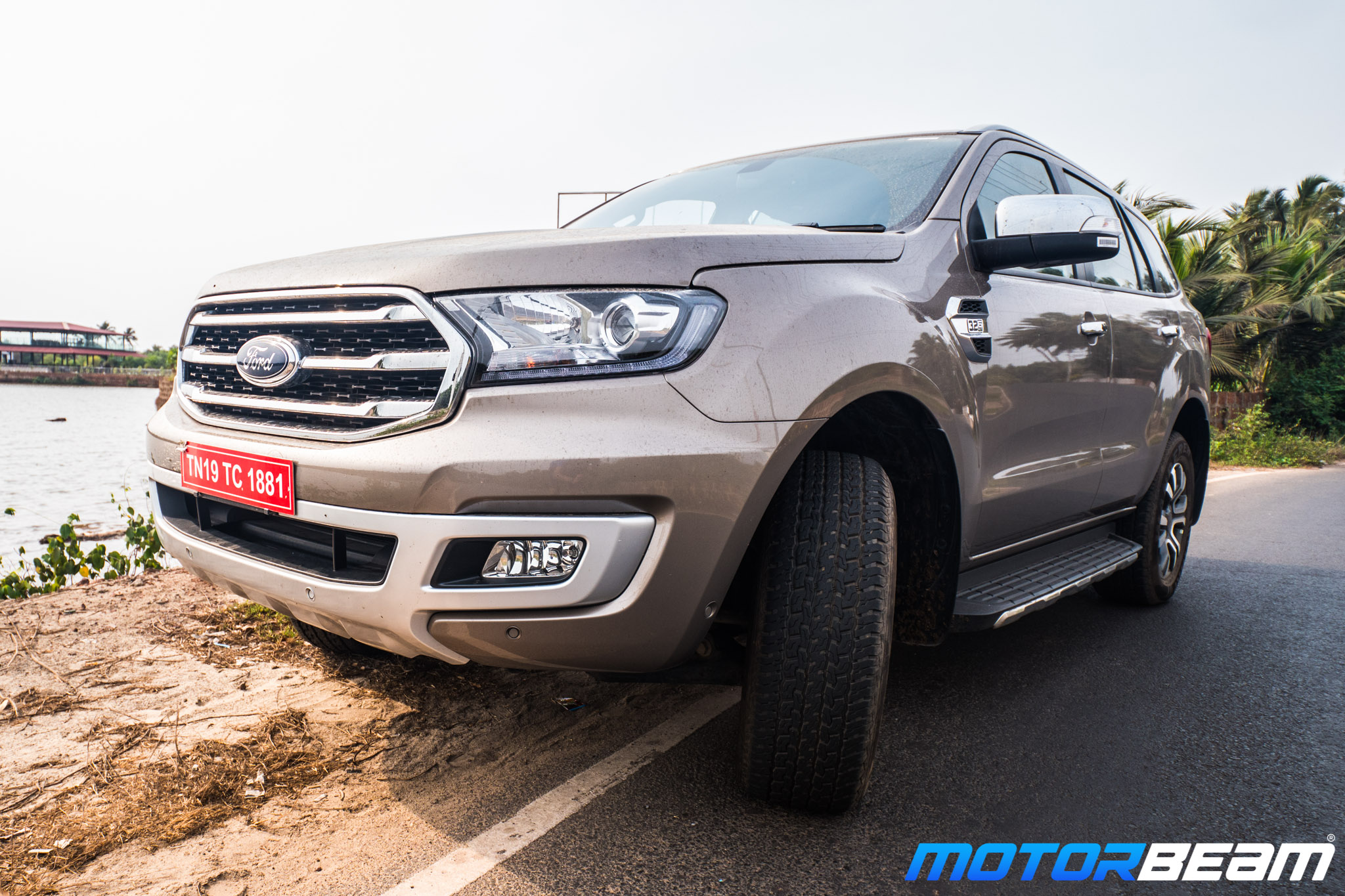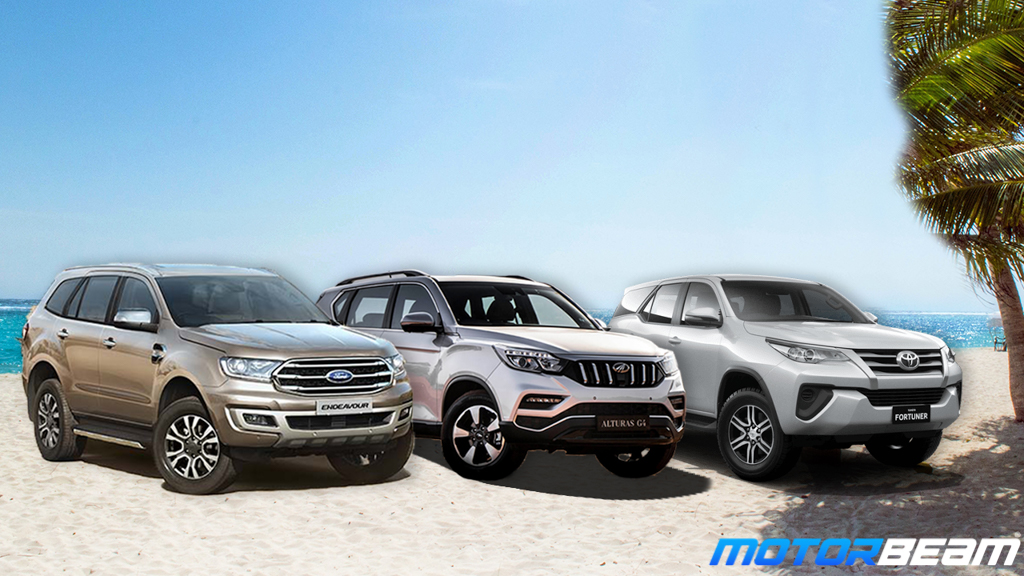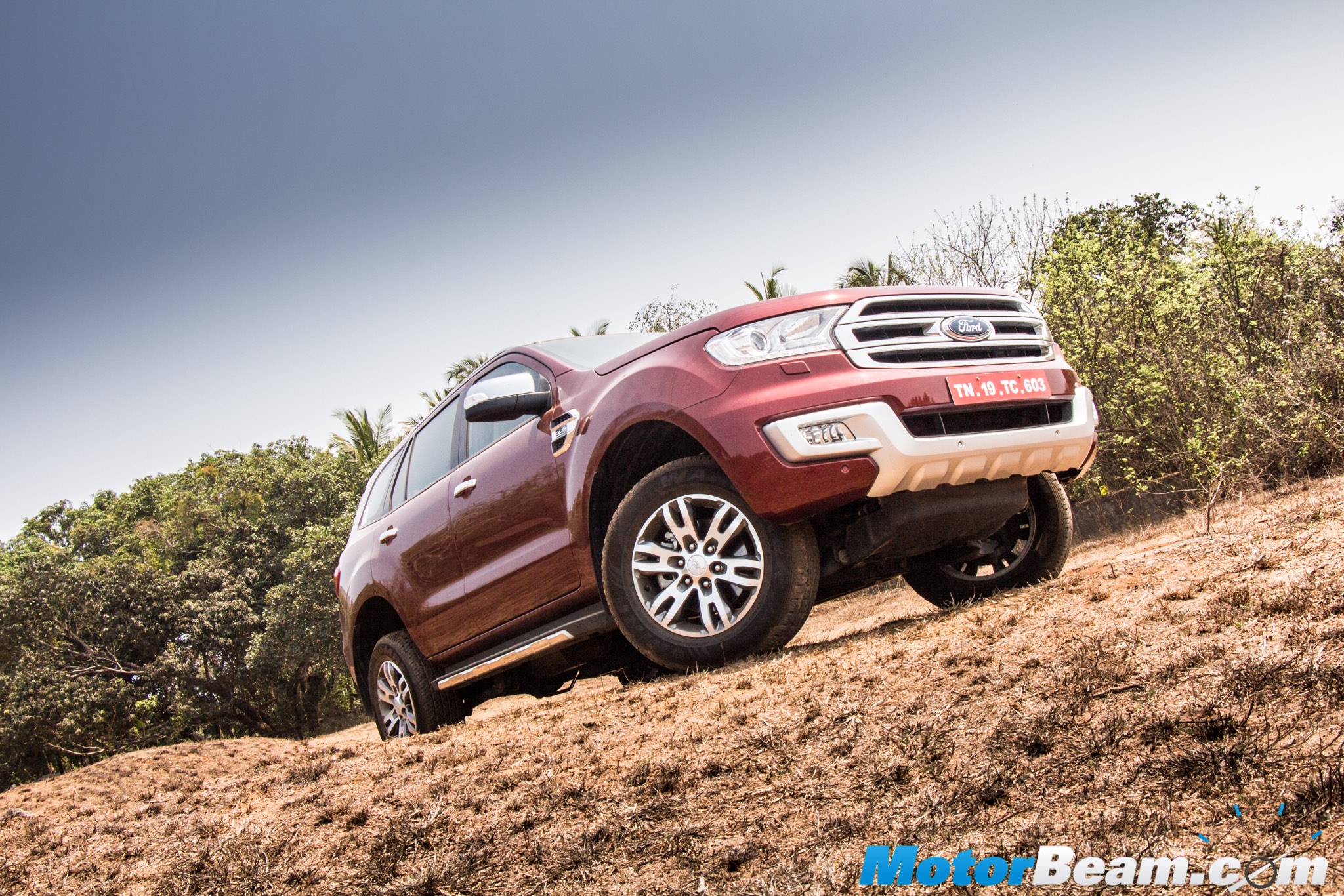The 2.2-litre engine again gets the option of a manual transmission
Performance – Mechanically there is absolutely no change with this facelift. Ford has continued with the same 2.2-litre and 3.2-litre engines. Both these engines deliver brilliantly and thats the main reason why Ford didn’t need to change anything. Ford has also done away with too many variants, currently there are only 3 variants on sale. The 3.2-litre car comes only in the top of the line Titanium + variant which comes paired with a 6-speed automatic transmission and in a 4WD layout. Coming to the 2.2-litre engined car, there is something here for the enthusiasts. Ford is bringing back its 6-speed manual and this will appeal to those who love to extract every ounce from the gearbox. It will also be available in the same 6-speed automatic guise and this lower capacity engine will come in a 2WD layout.
The 2.2-litre engine has sufficient performance for city and highway driving
If performance is what you crave, get yourself the 3.2-litre variant
We sampled the 3.2-litre powered car and this engine packs so much punch that you dont really feel the massive weight of this car. Producing a segment best power & torque of 200 PS & 470 Nm respectively, this engine has a huge load of performance under its belt. There is a miniscule lag at the lower end of the rev band but the midrange is so strong that you don’t practically feel any hesitstion. Moreover, the midrange is spread out over such a wide band that you are practically in the peak performance band most of the times.
The Endeavour has good NVH levels thanks to Active Noise Cancellation
Like most diesel motors, power fades out as you rev into the higher end of the rev band. The 6-speed automatic box is extremely slick and refined but it tends to hold onto a gear a tad bit longer. In the Sports mode, it will not upshift on hitting the rev-limiter which makes it so much more fun to drive enthusiastically. This engine truly shines on the highway and we expect it to return around 8-10 km/l in the average city and highway driving cycle. The 2.2-litre engine produces 160 PS & 385 Nm and will be the car of choice for those mainly driving in the city. One can expect a fuel economy of approximately 10-12 km/l from the smaller engine.
The Endeavour performs impressively off the road
Driving Dynamics – This is where the Endeavour truly shines. Weighing close to 2400 kgs, this SUV has a ladder frame layout which gives it some great off road prowess but this comes at the cost of fuel economy and handling (one would imagine). But, you will be surprised how beautifully this car handles, the highlight being a perfectly calibrated steering wheel. This steering wheel is light at low speeds, weighs up amazingly at high speeds and gives you the confidence to push it harder. Even at high speeds, the Endeavour stays well planted to the road, yes, being a ladder frame, there is a fair amount of bodyroll but it is well contained. Clearly the Endeavour is the best handling SUV out there by ladder frame standards.
The steering has been calibrated brilliantly
It is easy to say that this SUV has the best off-road performance in its segment
NVH levels are well contained. There is barely any noise creeping into the cabin thanks to Fords Active Noise Cancellation Technology. Ride quality is a little lumpy at slow speeds (owning to the ladder frame layout) but once you gather some pace, the Endeavour precisely filters out every little bump from entering the cabin. Ford has managed to find the perfect balance between ride and handling. The real benefits of the ladder frame layout were reaped when we went dune bashing. You have to actually be in the car to believe what the Endeavour is capable off. Part of the off-road magic comes with the hardware this car offers, right from the low range gearbox to electronically locking rear differentials and Terrain Management System. Brakes offer tremendous bite and braking is progressive and predictable.




